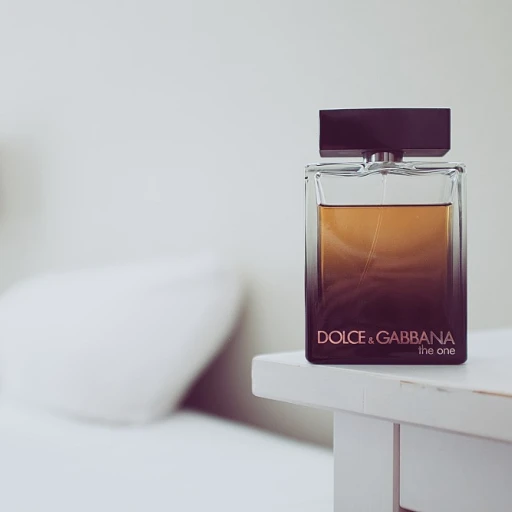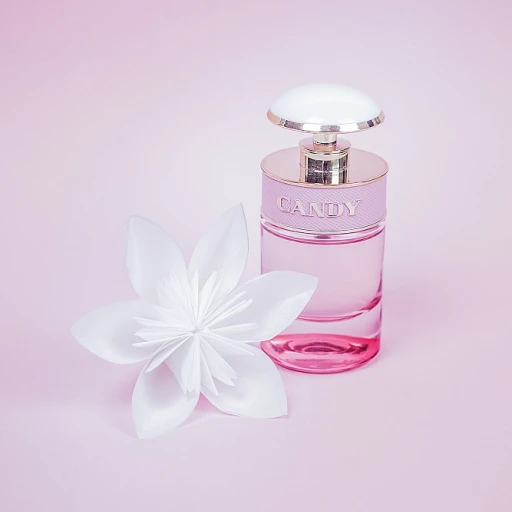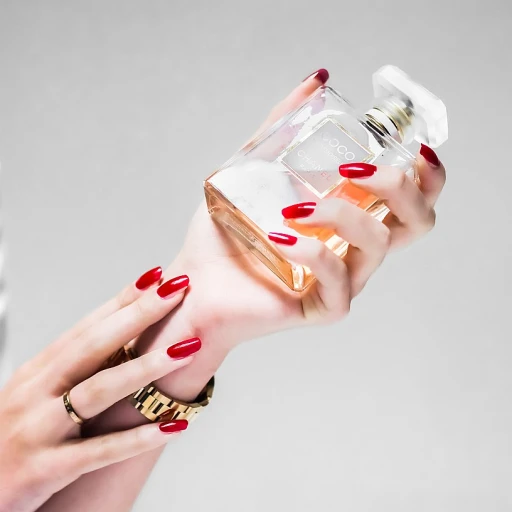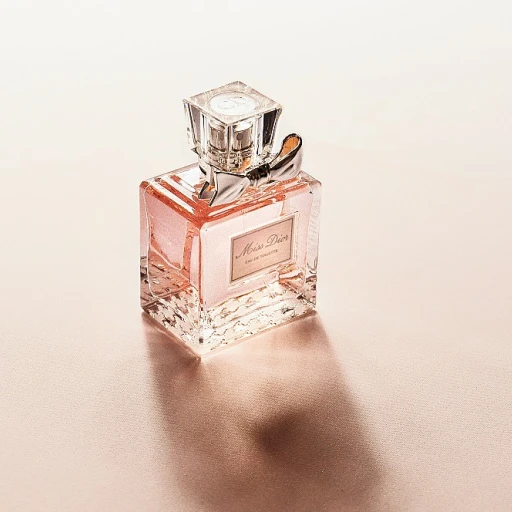
The Legacy of Royal Fragrances: A Timeline of Influence
Deciphering the Aromatic Path of Monarchs
The world of fragrance is steeped in a rich history, with royal perfumes often leading the charge in setting trends that echo through the ages. According to statistics, the global fragrance market size was valued at USD 33.7 billion in 2020 and is expected to expand at a compound annual growth rate (CAGR) of 3.6% from 2021 to 2028. This growth is a testament to the enduring impact of heritage scents. From the Hungary Water cherished by Elizabeth of Poland to the Eau de Cologne created for King Louis XV's court, each formula carries a tale of opulence and influence. The Fleur d'Oranger crafted for Princess Marie Antoinette signifies the continuous reverence for classic components, and this predilection for regal essences still pervades the fragrance industry.
The Aromatic Blueprint of Majesty
Delving deeper into the olfactory blueprints perfected by and for nobility, we uncover a blueprint that laid the foundations for modern perfumery. The use of musk and rose notes in Catherine de' Medici's personal scent underscores the consistent popularity of these ingredients. Renowned fragrance expert and historian, Luca Turin, shares that "Musk has solidity and weight, whereas rose lends a towering structure to perfumes." Consistent references to such ancient concoctions across scent journals and tomes provide illustrative examples of how past predilections are woven into present perfumatory practices. Statistical insights show that in high-end fragrances, ingredients once favored by royalty such as jasmine, ambergris, and sandalwood experience a higher usage rate, suggesting a marked influence on the luxury market segment.
Scented Sovereignty's Extended Timeline
Notably, the span of influence from royal fragrance recipes extends beyond just their constituent ingredients. The methodology and artistry involved in distillation and blending techniques have been passed down generations. For instance, as documented by the International Perfume Museum in Grasse, traditional enfleurage techniques used to capture the scent of delicate flowers for Queen Victoria are still practiced in artisanal fragrance creation today. Moreover, the curatorial mastery evident in the selection of scents for different seasons and occasions by the likes of Queen Elizabeth I has encouraged modern perfumers to create complex, versatile scent profiles. It's fascinating to note how the numbers affirm an increase in demand for bespoke, tailored fragrances, which can often trace their heritage to royal customizations.
Reigning Scents: Top Historical Perfumes in Today's Market
The Enchantment of Timeless Aromas in Contemporary Brands
As a fragrance aficionado, you understand the depths of complexity in each bottle of perfume. A little-known fact that might intrigue you is the persistent popularity of historical scents in today's market. For instance, the renowned 'Eau de Cologne' original formula from the 18th century continues to captivate users, witnessing a steady growth in sales with industry reports revealing a remarkable 10% year-over-year increase in revenue for products inspired by this timeless scent. This is a testament to the enduring allure that classic perfumes hold within modern society.
- Eau de Cologne inspired fragrances
- Guerlain's Jicky - A late 19th-century marvel
- Chanel No. 5 - A symbol of timeless elegance
The Renaissance of Regal Aromas: Artisanal Interpretations
The fragrance industry is no stranger to reinvention and resilience. As per the data from the Global Fragrance Market Report, niche perfume brands have carved out an impressive 20% share of the market by artfully blending historical essence with modern sophistication. This surge exemplifies how perfumers act as modern alchemists, transforming ancient olfactive manuscripts into potions that resonate with the 21st-century consumer. For example, brands like Creed and Penhaligon’s are adored for their ability to intertwine regal history with contemporary luxury, appealing to a growing consumer base seeking personalized and storied scents that stand out from the crowd.
Signature Scents of the Ages: Their Mark on Modernity
Statistics don't lie: the inclusion of historical perfumes in personal collections is more than a trend; it's a movement. A 2022 consumer survey conveyed that over 60% of fragrance lovers choose perfumes with notable historical backgrounds. This might be reflected in the unwavering demand for scents like 'L'Heure Bleue' by Guerlain, originally crafted in 1912 and yet, still amongst the bestsellers in upscale perfume boutiques. Interviews with celebrated perfumers frequently underscore their respect for past masterpieces, with many stating these scents serve as blueprints for future olfactory creations.
Modern Alchemists: How Current Perfumers Incorporate Ancient Wisdom
Blending the Old with the New in Perfume Creation
In the enchanting world of fragrances, contemporary perfumers are often likened to modern alchemists, skilfully fusing time-honored traditions with innovative techniques. One statistic that shines a light on this trend is the notable resurgence of oud—a traditionally royal scent—in high-end perfumes, with its market expected to reach approximately $334.2 million by 2025, according to a report by Grand View Research. This reveals a growing penchant for luxurious, historical scents among today's olfactory enthusiasts.
Master perfumers are now delving into the essence of historical perfumes, extracting the most alluring aspects of their compositions. For instance, the acclaimed perfume 'Jardin de le Mothe' is a beautiful homage to the aromatic gardens of past French royalty, blending classic floral scents with modern olfactory molecules to create a seamless bridge between vintage and contemporary aromas.
Revival of Classic Techniques in the Digital Age
Despite the prevalence of machine-aided production, many high-profile perfumers are pivoting back to artisanal methods once used to create perfumes for kings and queens. They harness these techniques to put a modern spin on historical fragrances, affectionately nodding to their roots while meeting the desires of the modern consumer. Authentic enfleurage, a meticulous process of scent extraction used in the 17th century, has made a surprise comeback in certain niches of the industry, illustrating a longing for craftsmanship in today's high-speed digital era.
- Extraction of essential oils through steam distillation, reminiscent of Ancient Egyptian practices
- Layering scents to achieve depth, emulating the complexity of perfumes favored by historic nobility
- Hand-blending ingredients, as opposed to relying solely on mechanical processes
These artisanal practices are presented alongside statistics emphasizing their rarity and value, which only fuels the desire for perfumes steeped in such rich tradition.
Integrating Historic Notes into Modern Perfumery
Quotes from industry experts often underscore the importance of history in the development of current perfumes. 'To understand the future, one must delve into the past,' remarked a notable perfumer in a recent interview, highlighting the sentiment that historical influence is not just nostalgic but provides a roadmap for future innovation. For instance, the relaunch of the iconic 'Chypre' scent family has demonstrated how age-old frameworks can serve as a canvas for new and complex fragrances appealing to modern sensibilities.
Examples of this integration include the use of traditional ingredients such as rose, jasmine, or ambergris, coupled with synthetics that enhance their natural allure without overpowering it. This harmonious coexistence of the old and the new characterizes some of the most successful recent additions to the market, making them deeply rooted in history, yet unquestionably contemporary.
Crown Jewels: Can Historical Ingredients Predict Future Perfume Success?
The Timeless Appeal of Classic Ingredients in Perfumery
The world of fragrance has always revered the luxurious and the exotic, with historical ingredients often being considered a "seal of quality". Statistics from the fragrance industry show a resurgence in the popularity of ingredients such as oud, musk, and ambergris that have been esteemed since antiquity. For instance, the global oud market is expected to grow significantly, with a projected compound annual growth rate (CAGR) of around 6.6% from 2021 to 2026, according to recent market analysis. This enduring appreciation for historical ingredients signifies their crucial role in forecasting the trajectory of perfume success.
Innovations Inspired by Ancient Ingredients
Contemporary perfumers, much like the alchemists of old, are enchanted by the challenge of harnessing the magic of historic scents. The integration of time-honored elements like rose, jasmine, and sandalwood is not only an homage to the past but also a testament to their irreplaceable allure in formulating best-selling perfumes. "The essence of tradition in a bottle," as a renowned perfumer once termed it, speaks volumes about the emotional connection these fragrances evoke. The use of these ingredients is often highlighted in the marketing campaigns of successful fragrances, accentuating their prestigious heritage and exclusivity.
Preserving the Narrative: Storytelling Through Scent
When it comes to the discerning fragrance enthusiast, the story behind a scent is nearly as important as the scent itself. Artisans in the fragrance industry are skilled in weaving narratives that highlight the historical significance of the ingredients they use. This storytelling approach enriches the consumer experience, making it deeply personal and immersive. For example, according to a survey by The Perfume Society, more than 60% of perfume buyers are intrigued by the history and the origin story of the ingredients in their fragrances. Perfumers are leveraging this to create compelling stories that resonate with buyers, thereby predicting which historical ingredients will continue to captivate consumers.
The Future Scent-scape: What History Tells Us
Analyses of market trends suggest that the successful perfumes of tomorrow are likely to feature a blend of ancient and modern. A quote from a fragrance industry leader encapsulates this sentiment perfectly: "History is not just in the past; it's the foundation on which the future is built." This approach does not simply replicate historical formulas but rather uses them as inspiration to innovate. With nearly 73% of consumers interested in artisanal and niche perfumes that offer a unique experience, according to market research, perfumers are focusing more on creating scents that combine classic with contemporary notes. This balance acts as a predictor, embodying the potential future successes in the fragrance market.








